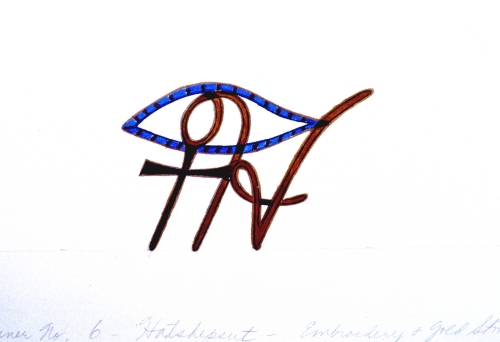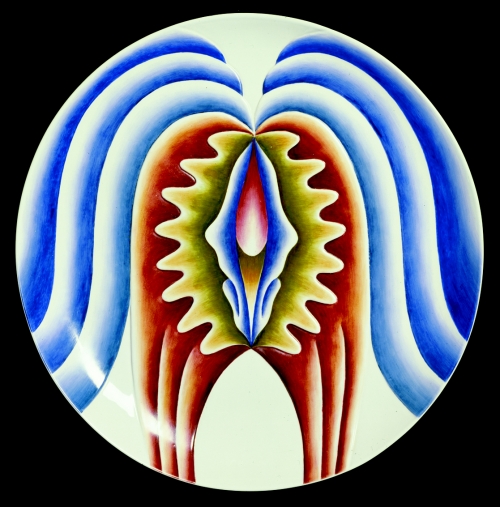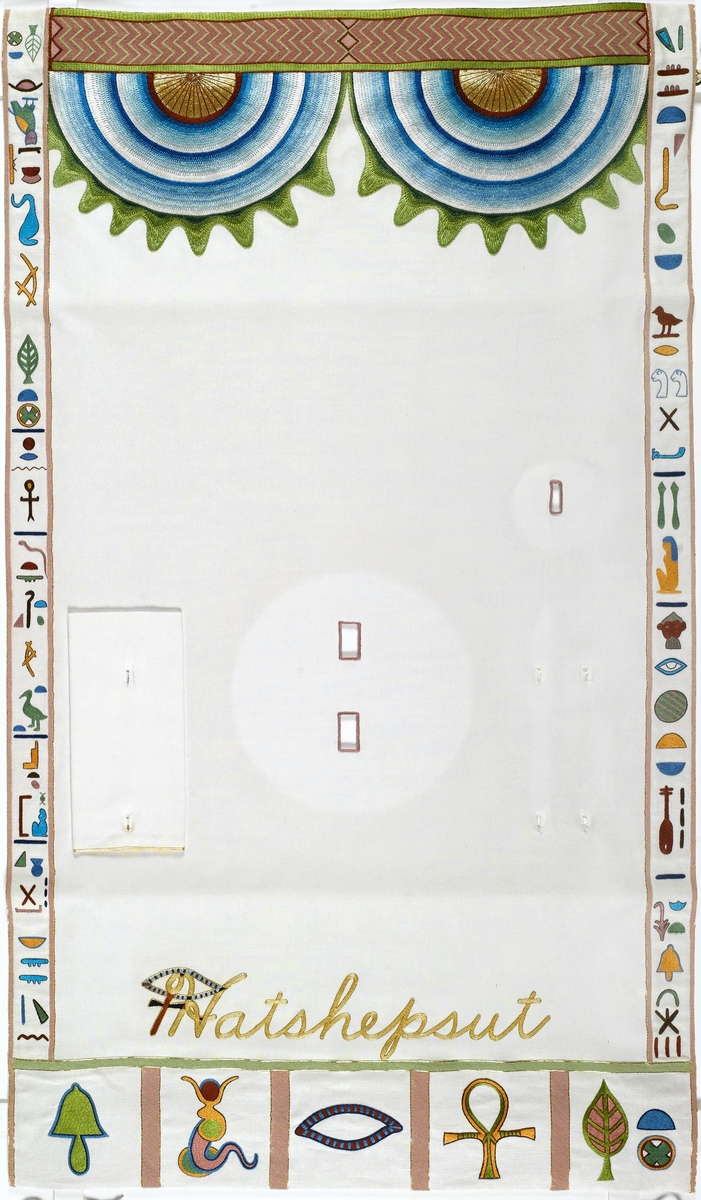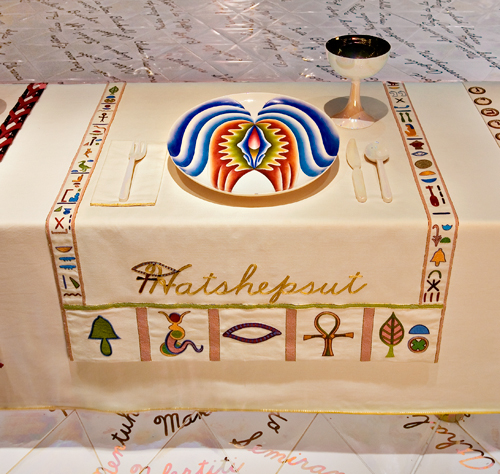Hatshepsut
(b. 15th century B.C.E., Ancient Egypt; d. unknown)
Hatshepsut reigned over Ancient Egypt as its veritable pharaoh while the official king was still too young to rule effectively. During her reign she adopted a role and title typically reserved for male rulers.
Born to King Thuthmose I and his wife Ahmose, Hatshepsut began her ascent to power following the death of her father. At that time Thutmose II, Thuthmose’s son by the non-royal Moutnofrit, became the rightful heir to the throne and married his half-sister Hatshepsut. Thutmose II’s reign was short-lived, however; he died only two years after taking the throne. His only child with Hatsheput was their daughter Neferure, who as a princess, could not take over her father’s throne. Thutmose III, the son of Thutmose II and a secondary queen named Isis, became the next in line to rule over Egypt. Thutmose III was just a child at the time he was crowned pharaoh, which allowed Queen Hatshepsut to rule alongside Thutmose III as his regent.
Despite her legal title as regent, Hatshepsut actively took the pharaonic role, because the king himself was still young. Though this role was traditionally assumed by mothers of young kings, Hatshepsut acted as principal king while Thutmose III was treated as co-regent, a role usually reserved for younger, designated heirs appointed by their fathers. Hatshepsut actively asserted her role as pharaoh and sought to legitimate her rule over Egypt in numerous, highly visible ways. In reliefs she commissioned of herself, she is often represented in the dress of a male pharaoh, even wearing a fake beard; the only indication that she is a woman is her name inscribed beside her image. At other times, Hatshepsut is identifiably female, but wears the royal regalia of a male pharaoh.
A famous series of reliefs at her temple at Deir el-Bahari in the Valley of the Kings, depict Hatshepsut’s divine birth and coronation. In such divine birth scenes, a god—in Hatshepsut’s relief it is the chief god Amun—impregnates the pharaoh’s mother, thus establishing the pharaoh’s rule as a rightful and god-granted part of the divine order of the world. In representing herself as a divine daughter of the gods, she sought to erase any doubts about the legitimacy of her rule as pharaoh.
Hatshepsut proved to be immensely powerful and successful as a ruler. Another series of reliefs at Deir el-Bahari recount the extraordinary commercial expeditions she undertook during her reign, wielding her influence from Nubia and the Levant to the mysterious Land of Punt. Deir el-Bahari, now renowned as one of the most exquisite and artistically sophisticated temples of Ancient Egypt, also stands as testament to the great construction projects developed under Hatshepsut’s ruling hand, both within Egypt and throughout Nubia, just south of Egypt.
After her death, Thutmose III, now sole king, emphasized his relationship to Thutmose II, his natural father, and minimized evidence of Hatshepsut’s more than twenty-year dominance during his reign. This allowed him to appoint his own son, a direct descendent of Thutmose II, as his co-regent near the end of his reign. Despite Thutmose III’s efforts to downplay her role, Hatshepsut is still widely considered to have been the legitimate fifth king of the Eighteenth Dynasty, and her life as a powerful ancient female authority continues to fascinate thousands of years later.
Hatshepsut at The Dinner Party
Hatshepsut’s plate is the first at The Dinner Party to have a raised relief surface. It symbolizes the authority Hatshepsut exerted over Egypt as its most renowned female pharaoh. It also mirrors the Egyptian low relief, a popular and important method of sculpting during the Dynastic period, in which figures protrude slightly from the surface, creating contour and visibility. In keeping with that tradition, the center of the plate is only slightly, nearly imperceptibly, raised; according to Chicago, this place setting represents the transition from the flat plates in The Dinner Party to the three-dimensional ones. The plate’s blue and red tones recall colors often seen in Egyptian tomb paintings and reliefs. The smoothly curving shapes in the image suggest Egyptian hairstyles, headdresses, pharaonic collars, and the rendering of partial profiles used repeatedly in Egyptian portraits.
Egypt’s economic prosperity during Hatshepsut’s rule is lauded in her runner. Hieroglyphic symbols praising the pharaoh’s reign were embroidered onto strips of fine white linen, which emulate the high-quality fabric used in Hatshepsut’s time (Chicago, The Dinner Party, 43).
The pink and green border on the runner replicates the geometric motif and color palette found in the frescoes in Hatshepsut’s tomb. The blue-green roundlettes on the back of the runner are designed to resemble the same style of pharaonic collar. In ancient Egypt, blue-green was an important color, as it was associated with the deities, and rulers who wore the color visually connected themselves to gods and goddesses.
The illuminated letter “H” on the front of the runner combines the Egyptian symbols of the eye of justice and the life-giving symbol of the pharaoh (Chicago, Embroidering Our Heritage, 56). Also on the front of the runner are embroidered symbols “suggesting the phrase: ‘Well-doing Goddess, Just Pharaoh of Egypt’” (Chicago, Embroidering Our Heritage, 61).
Primary Sources
High and Low Chronologies of Egypt: Manetho; Africanus; Jospehus.
Translations, Editions, and Secondary Sources
Andronik, C.M., and J.D. Fiedler. Hatshepsut, His Majesty, Herself. New York: Atheneum, 2001.
Carter, Dorothy Sharp. His Majesty, Queen Hatshepsut. New York: HarperCollins, 1987.
Robins, Gay. Women in Ancient Egypt. Cambridge, Mass.: Harvard University Press, 1993.
Roehrig, Catharine, et al., eds. Hatshepsut: From Queen to Pharaoh. New York: The Metropolitan Museum of Art, in association with Yale University Press, 2005.
Russmann, Edna R. Eternal Egypt: Masterworks of Ancient Art from the British Museum. Berkeley: University of California Press, 2001.
Tyldesley, Joyce. Hatchepsut: The Female Pharaoh. New York and London: Viking, 1996.
Van Sertima, Ivan. Black Women in Antiquity. New Brunswick, N.J.: Transaction Books, 1988.
Wells, Evelyn. Hatshepsut. Garden City, N.Y.: Doubleday, 1969.
Whitman, Ruth. Hatshepsut Speak to Me. Detroit: Wayne State University Press, 1992.
Winlock, Herbert E. In Search of the Woman Pharaoh Hatshepsut: Excavations at Deir el-Bahri, 1911–1931. London and New York: Kegan Paul, 2000.

Judy Chicago. Drawing for Hatshepsut Illuminated Letter on runner, 1979. Mixed media on paper, approx. 9 × 12 in. (22.9 × 30.5 cm). © Judy Chicago. (Photo: © Donald Woodman)
Place Setting Images

Judy Chicago (American, b. 1939). The Dinner Party (Hatshepsut plate), 1974–79. Porcelain with overglaze enamel (China paint), 14 × 14 × 1 in. (35.6 × 35.6 × 2.5 cm). Brooklyn Museum, Gift of the Elizabeth A. Sackler Foundation, 2002.10. © Judy Chicago. (Photo: © Donald Woodman)

Judy Chicago (American, b. 1939). The Dinner Party (Hatshepsut runner), 1974–79. Cotton/linen base fabric, woven interface support material (horsehair, wool, and linen), cotton twill tape, silk, synthetic gold cord, polychrome DMC thread, canvas, silk thread, 52 × 30 1/4 in. (132.1 × 76.8 cm). Brooklyn Museum, Gift of the Elizabeth A. Sackler Foundation, 2002.10. © Judy Chicago
Biographical Images
Related Heritage Floor Entries
Web Resources
Interactive panoramic view of Hatshepsut’s Mortuary Temple at Deir el-Bahar
